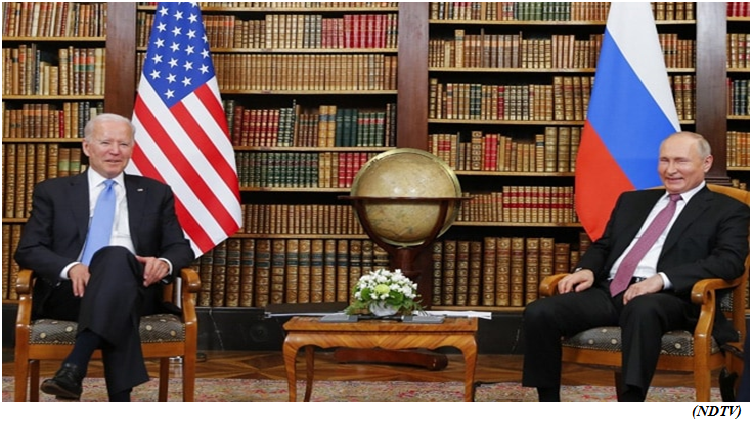Vostro accounts and how they facilitate trade (GS Paper 3, Economy)

Why in news?
- Recently, 20 Russian banks, including Rosbank, Tinkoff Bank, Centro Credit Bank and Credit Bank of Moscow have opened Special Rupee Vostro Accounts (SRVA) with partner banks in India.
- All major domestic banks have listed their nodal officers to sort out issues faced by exporters under the arrangement.
What is the SRVA arrangement?
- A Vostro Account is an account that domestic banks hold for foreign banks in the former’s domestic currency, in this case, the rupee. Domestic banks use it to provide international banking services to their clients who have global banking needs.
- It is an integral offshoot of correspondent banking that entails a bank (or an intermediary) to facilitate wire transfer, conduct business transactions, accept deposits and gather documents on behalf of the other bank. It helps domestic banks gain wider access to foreign financial markets and serve international clients without having to be physically present abroad.
- The SRVA is an additional arrangement to the existing system that uses freely convertible currencies and works as a complimentary system.
- For perspective, freely convertible currencies refer to currencies permitted by rules and regulations of the concerned country to be converted to major reserve currencies (like U.S. dollar or pound sterling) and for which a fairly active market exists for dealings against major currencies. The existing systems thus require maintaining balances and position in such currencies.
How does it function?
- The framework entails three important components, namely, invoicing, exchange rate and settlement. Invoicing entails that all exports and imports must be denominated and invoiced in INR.
- The exchange rate between the currencies of the trading partner countries would be market-determined. To conclude, the final settlement also takes place in Indian National Rupee (INR).
- The authorised domestic dealer banks (those authorised to deal in foreign currencies) are required to open SRVA accounts for correspondent banks of the partner trading country.
- Domestic importers are required to make payment (in INR) into the SRVA account of the correspondent bank against the invoices for supply of goods or services from the overseas seller/supplier.
- Similarly, domestic exporters are to be paid the export proceeds (in INR) from the balances in the designated account of the correspondent bank of the partner country.
- As for availing an advance against exports, it would be the responsibility of the domestic bank to accord foremost priority to ensuring that the available funds are used to meet existing payment obligations, that is, from the already executed export orders or export payments in the pipeline.
- All reporting of cross-border transactions are to be done in accordance with the extant guidelines under the Foreign Exchange Management Act (FEMA), 1999.
What is the eligibility criteria of banks?
- Banks from partner countries are required to approach an authorised domestic dealer bank for opening the SRVA. The domestic bank would then seek approval from the apex banking regulator providing details of the arrangement.
- It would be the responsibility of the domestic banks to ensure that the correspondent bank is not from a country mentioned in the updated Financial Action Task Force (FATF) Public Statement on High Risk & Non-Co-operative jurisdictions. Domestic banks must also put forth for perusal, financial parameters pertaining to the corresponding bank.
- Authorised banks can open multiple SRV accounts for different banks from the same country. Further, balances in the account can be repatriated in freely convertible currency and/or currency of the beneficiary partner country depending on the underlying transaction, that is, for which the account was credited.
What is its purpose?
- The Economic Survey (2022-23) had argued that the framework could largely reduce the “net demand for foreign exchange, the U.S. dollar in particular, for the settlement of current account related trade flows”.
- It added that the framework would also reduce the need for holding foreign exchange reserves and dependence on foreign currencies, making the country less vulnerable to external shocks.
- Indian exporters could get advance payments in INR from overseas clients and in the long-term promote INR as an international currency once the rupee settlement mechanism gains traction, the survey argued.
- As per the Bureau for International (BIS) Settlements’ Triennial Central Bank Survey 2022, the U.S. dollar was the most dominant vehicle currency accounting for 88% of all trades. The INR accounted for 1.6%.
Russia suspends the last remaining major nuclear treaty with the U.S.
(GS Paper 2, International Relation)
Why in news?
- Recently, Russian President suspended its participation in the 2010 New START treaty, the last remaining nuclear arms control pact with the U.S. amid tensions with U.S. over the fighting in Ukraine.
- He accused the U.S. and its NATO allies of openly declaring the goal of Russia’s defeat in Ukraine.
- New START’s official name is, ‘The Treaty between the United States of America and the Russian Federation on Measures for the Further Reduction and Limitation of Strategic Offensive Arms’.

What is the New START?
- The name START comes from the original “Strategic Arms Reduction Treaty”, known as START-I, which was signed between the US and the erstwhile USSR in 1991, and came into force in 1994.
- START-I, which capped the numbers of nuclear warheads and intercontinental ballistic missiles (ICBMs) that each side could deploy at 6,000 and 1,600 respectively, lapsed in 2009, and was replaced first by the Strategic Offensive Reductions Treaty (SORT, also known as the Treaty of Moscow), and then by the New START treaty.
- The New START, officially, the “Treaty between the United States of America and the Russian Federation on Measures for the Further Reduction and Limitation of Strategic Offensive Arms”, entered into force on February 5, 2011, and placed new verifiable limits on intercontinental-range nuclear weapons.
- The two countries had to meet the treaty’s central limits on strategic offensive arms by February 5, 2018, and to then stay within those limits for the period the treaty remained in force. The US and Russia Federation subsequently agreed to extend the treaty through February 4, 2026.
What limits did the New START impose on the two countries?
- 700 deployed intercontinental ballistic missiles (ICBMs), deployed submarine-launched ballistic missiles (SLBMs), and deployed heavy bombers equipped for nuclear armaments;
- 1,550 nuclear warheads on deployed ICBMs, deployed SLBMs, and deployed heavy bombers equipped for nuclear armaments (each such heavy bomber is counted as one warhead toward this limit);
- 800 deployed and non-deployed ICBM launchers, SLBM launchers, and heavy bombers equipped for nuclear armaments.
How is compliance with the treaty ensured?
- The treaty provides for 18 on-site inspections per year for US and Russian inspection teams.
- Type One inspections focus on sites with deployed and non-deployed strategic systems (up to 10 per year), and Type Two inspections focus on sites with only non-deployed strategic systems (up to 8 per year).
Menstrual leaves introduced in Spain
(GS Paper 1, Social Issues)
Why in news?
- Recently, Spain has become the first European country to introduce paid menstrual or period leaves, with a law passed. The government would foot the bill for the monthly paid leaves of three to five days, after a doctor’s note is shown.
- Also included in the law are provisions for free menstrual hygiene products that would be made available in educational centres, prisons, and social centres.
- In India’s Supreme Court, a Public Interest Litigation (PIL) has been filed seeking menstrual leave for female students and working women across India.

What is the demand for paid menstrual leave?
- Allowing women (as well as transgender people and those of other gender identities who experience menstruation) to avail the option of taking a few days’ leaves in a month has been advocated as a step towards better working conditions.
- While this is not a new idea, the concept has gained traction within the last decade. In 2017, a Bill was introduced by NinongEring, a Congress MP from Arunachal Pradesh, in the Lok Sabha for the purpose.
- It stated that women employed in a government-registered establishment and students of Class VIII and above would be entitled to paid leave or leave from the school, “as the case may be”, for four days during her menstruation.However, the Bill never became law.
In which countries have period leaves been introduced?
- The measure for period leaves is not exactly new. Many Asian countries have them, the earliest being Japan.
- Zambia’s law states, “A female employee is entitled to one day’s absence from work each month without having to produce a medical certificate or give reason to the employer.”
- Russian workers in the 1920s first pioneered the concept. Since then it has made its way in some shape or form to countries like Taiwan and Indonesia.
Case in India:
- In India, states govern the subject of health and their experience has varied. The Kerala government said it would grant menstrual leave for female students studying in all state universities coming under the Department of Higher Education. Much earlier, Bihar under then Chief Minister Lalu Prasad Yadav introduced the provision in 1992.
- But the measure, arguably, is yet to be normalized, ‘The Patna University Teachers’ Association sought its implementation. However, most women professors, especially in co-educational colleges, found it awkward to ask for such a leave.
- The PIL to be soon heard by the SC also cited a study on the impact of menstruation on women’s health, and how Article 14 of the Indian Constitution (right to equality) is violated since some states have such policies in place while others do not.
Why is the idea of menstrual leave still contentious?
- The experience of places where such laws are in place does not give a clear picture.
- Where it has been in place, like in Japan, at times there have not been too many takers. This is because simply changing one policy does not lead to the removal of the taboos associated with menstruation and its discussion.
- Another argument says mandating paid leaves would discourage the hiring of women ,who are already underrepresented in the workforce in most countries.
- Further, these protections would highlight differences among employees, something that many women have at times refrained from emphasising to avoid discrimination.
- But with greater acknowledgement of the obvious difficulties caused because of menstruation, attempts are being made for inclusive policies by even private organisations, such as Zomato and Nike.
- The flexibility offered to employees in taking these leaves is one example, another is an all-around approach towards normalising menstruation, and making available clean public toilets, sanitary products and water in the workplace and wider public spaces.




